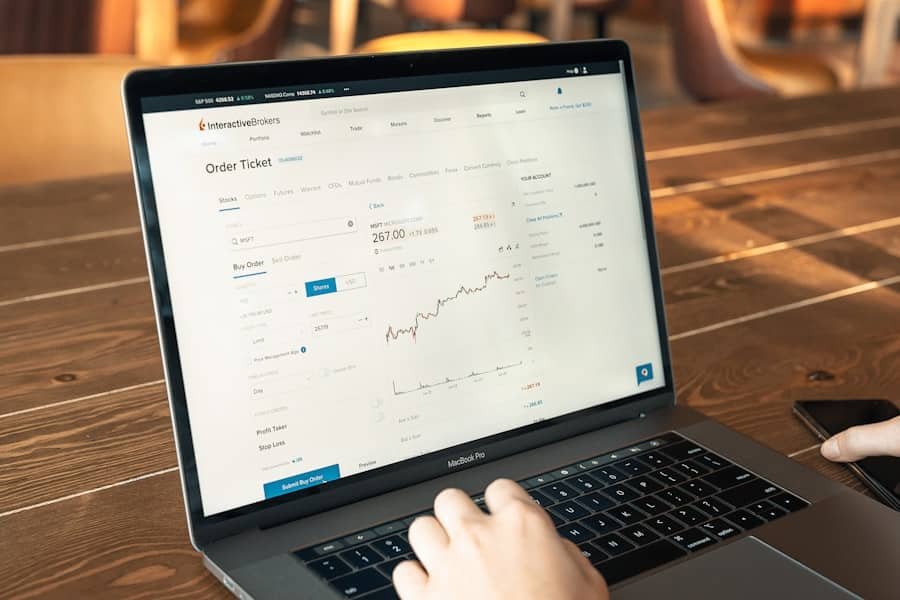Business cycles are periodic fluctuations in economic activity experienced by economies over time. These cycles typically comprise four distinct phases: expansion, peak, contraction, and trough. During expansion, economic growth occurs, accompanied by increased business investment and consumer spending.
The peak represents the highest point of economic activity before a downturn begins. Contraction follows, characterized by declining economic activity, which ultimately leads to a trough—the lowest point of the cycle before economic recovery commences. Long-term economic growth refers to the sustained increase in an economy’s capacity to produce goods and services over extended periods.
This growth is primarily driven by factors such as technological advancements, investments in physical and human capital, and improvements in overall productivity. While business cycles represent short-term fluctuations, long-term economic growth is fundamental to improving living standards and reducing poverty rates. Business cycles and long-term economic growth are interconnected phenomena.
The short-term fluctuations observed during business cycles can significantly impact long-term growth prospects. A comprehensive understanding of business cycle dynamics and their relationship to long-term growth is essential for policymakers, businesses, and individuals seeking to navigate the complexities of modern economic systems.
Key Takeaways
- Business cycles are fluctuations in economic activity that occur over time, including periods of expansion and contraction.
- Business cycles can impact investment and innovation, with periods of economic growth leading to increased investment and innovation, while downturns can lead to decreased investment and innovation.
- Business cycles also play a role in labor markets and productivity, with periods of expansion leading to increased employment and productivity, and downturns leading to decreased employment and productivity.
- Consumer behavior is influenced by business cycles, with periods of economic growth leading to increased consumer spending, and downturns leading to decreased consumer spending.
- Government policies can respond to business cycles to promote long-term growth, including fiscal and monetary policies to stimulate the economy during downturns and promote stability during periods of expansion.
The Impact of Business Cycles on Investment and Innovation
The Upswing: Investment and Innovation Flourish
During periods of economic expansion, businesses are more likely to invest in new technologies, research and development, and capital equipment. This is because they anticipate higher future demand for their products and services. Innovation tends to flourish during these times as well, as businesses seek to gain a competitive edge and capitalize on the growing economy.
The Downturn: Investment and Innovation Slow Down
Conversely, during economic contractions, businesses may scale back their investment and innovation efforts as they face uncertainty about future demand and profitability. This can lead to a slowdown in technological progress and a reduction in productivity growth. Additionally, access to funding for new ventures may become more limited during downturns, further dampening investment and innovation.
Navigating the Fluctuations
It is important for businesses to recognize the impact of business cycles on investment and innovation and develop strategies to navigate these fluctuations. By maintaining a focus on long-term goals and staying agile in response to changing economic conditions, businesses can position themselves to thrive throughout the various phases of the business cycle.
The Role of Business Cycles in Labor Markets and Productivity

Business cycles play a crucial role in labor markets and productivity. During economic expansions, businesses tend to hire more workers to meet growing demand for their products and services. This leads to lower unemployment rates and rising wages as competition for skilled workers increases.
In turn, higher employment and wages can boost consumer spending, further fueling economic growth. Conversely, during economic contractions, businesses may lay off workers as demand for their products and services declines. This can lead to higher unemployment rates and downward pressure on wages.
As a result, consumer spending may decrease, exacerbating the economic downturn. Productivity, which measures the efficiency of production, is also influenced by business cycles. During expansions, businesses may invest in new technologies and processes to improve productivity as they seek to meet growing demand.
However, during contractions, businesses may cut back on such investments, leading to slower productivity growth. Understanding the impact of business cycles on labor markets and productivity is essential for policymakers and businesses seeking to foster long-term economic growth. By implementing policies that support job creation and productivity-enhancing investments, economies can better withstand the fluctuations of business cycles and promote sustainable growth.
The Relationship Between Business Cycles and Consumer Behavior
Consumer behavior is significantly influenced by business cycles. During periods of economic expansion, consumers tend to feel more confident about their financial prospects and are more willing to spend on discretionary items such as vacations, luxury goods, and home improvements. This increased consumer spending contributes to the overall growth of the economy during these times.
Conversely, during economic contractions, consumers may become more cautious with their spending as they worry about job security and future income. This can lead to a decrease in consumer spending on non-essential items and a focus on essential goods and services. As a result, businesses that rely on discretionary consumer spending may experience a decline in sales during downturns.
Understanding the relationship between business cycles and consumer behavior is crucial for businesses seeking to anticipate changes in demand for their products and services. By closely monitoring consumer sentiment and adjusting their strategies accordingly, businesses can better navigate the fluctuations of business cycles and maintain long-term growth prospects.
Government Policy Responses to Business Cycles and Long-Term Growth
Governments play a critical role in responding to business cycles and fostering long-term economic growth. During economic downturns, governments often implement expansionary fiscal and monetary policies to stimulate the economy. This may include increasing government spending on infrastructure projects, cutting taxes to boost consumer spending, or lowering interest rates to encourage borrowing and investment.
Conversely, during periods of economic expansion, governments may implement contractionary policies to prevent overheating of the economy and inflation. This could involve reducing government spending or increasing interest rates to curb excessive borrowing and investment. In addition to short-term responses to business cycles, governments also play a key role in promoting long-term economic growth through policies that support investment in education, infrastructure, research and development, and innovation.
By creating an environment conducive to long-term growth, governments can help economies withstand the fluctuations of business cycles and improve living standards for their citizens.
The Influence of Global Business Cycles on National Economies

The Ripple Effect of Economic Downturns
This phenomenon was evident during the 2008 global financial crisis, where the collapse of the housing market in the United States triggered a worldwide recession. The crisis highlighted the interconnectedness of the global economy and the potential for economic shocks to spread quickly across borders.
The Benefits of Economic Expansion
On the other hand, periods of economic expansion in one country can have positive effects on others. Increased demand for exports and investment opportunities can benefit countries that are closely tied to the expanding economy. For instance, China’s rapid economic growth over the past few decades has had far-reaching effects on global commodity prices, supply chains, and consumer markets.
Navigating the Global Economy
Understanding the influence of global business cycles on national economies is crucial for policymakers and businesses seeking to navigate the complexities of the global economy. By monitoring global economic trends and developing strategies to mitigate the impact of external shocks, countries can better position themselves for long-term growth and stability.
Strategies for Businesses to Navigate Business Cycles and Foster Long-Term Growth
Businesses can employ various strategies to navigate business cycles and foster long-term growth. During periods of economic expansion, businesses should focus on investing in innovation, expanding their market presence, and building financial reserves to weather future downturns. This may involve developing new products or services, entering new markets, or acquiring complementary businesses.
During economic contractions, businesses should prioritize cost management, efficiency improvements, and maintaining strong customer relationships. This may involve streamlining operations, renegotiating contracts with suppliers, or offering value-added services to retain customers. Additionally, businesses should maintain a focus on talent development and retention throughout all phases of the business cycle.
Investing in employee training and development can improve productivity and innovation capabilities while fostering a loyal and skilled workforce. In conclusion, understanding the dynamics of business cycles and their relationship to long-term economic growth is essential for policymakers, businesses, and individuals seeking to navigate the complexities of the modern economy. By recognizing the impact of business cycles on investment, innovation, labor markets, productivity, consumer behavior, government policy responses, global influences, and developing strategies for businesses to navigate these fluctuations effectively, economies can better withstand the fluctuations of business cycles and promote sustainable growth.
If you’re interested in learning more about the impact of business cycles on long-term economic growth, you may want to check out an article on The Econosphere website. The article discusses the relationship between business cycles and overall economic growth, providing valuable insights into how these fluctuations can shape the trajectory of a country’s economy. You can find the article here. For more information, you can also visit their contact us page.
FAQs
What are business cycles?
Business cycles are the fluctuations in economic activity that occur over time, typically characterized by periods of expansion and contraction in the economy. These cycles are often measured by changes in gross domestic product (GDP), employment, and other economic indicators.
What is the role of business cycles in shaping long-term economic growth?
Business cycles can have a significant impact on long-term economic growth. During periods of expansion, businesses invest in new technologies and infrastructure, leading to increased productivity and long-term growth. Conversely, during periods of contraction, businesses may cut back on investment and hiring, which can hinder long-term growth.
How do business cycles affect consumer behavior?
During economic expansions, consumers tend to have more confidence and are more willing to spend, which can drive economic growth. Conversely, during economic contractions, consumers may become more cautious and reduce their spending, which can further exacerbate the downturn.
What role do government policies play in mitigating the impact of business cycles?
Governments can use fiscal and monetary policies to help stabilize the economy during business cycles. For example, during a recession, the government may increase spending or cut taxes to stimulate economic activity. Central banks can also adjust interest rates to influence borrowing and spending.
How do business cycles impact employment and wages?
During economic expansions, businesses tend to hire more workers and wages may increase as labor becomes more scarce. Conversely, during economic contractions, businesses may lay off workers and wages may stagnate or even decrease as unemployment rises.








